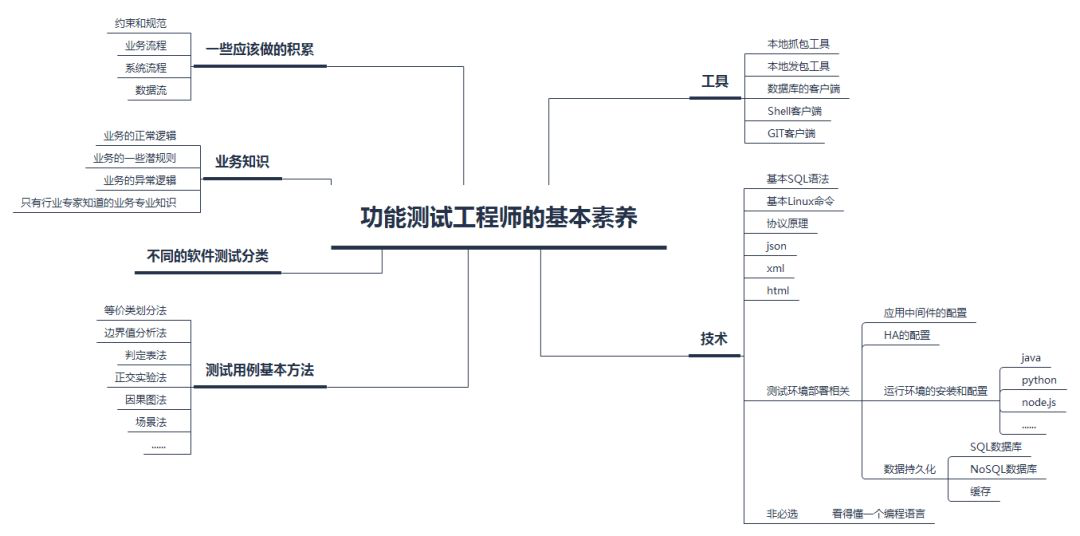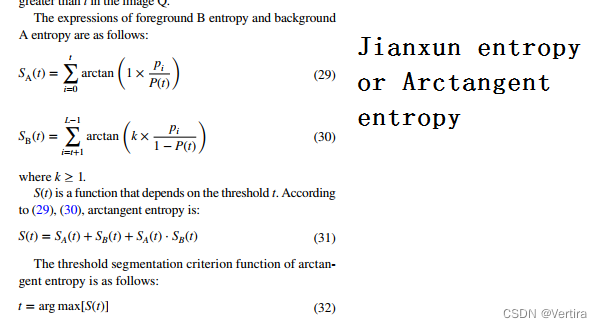当前位置:网站首页>Linear table sequence table comprehensive application problem p18
Linear table sequence table comprehensive application problem p18
2022-07-03 11:20:00 【jiuqi_ Jiu Qi】
Definition of a single linked list
typedef struct LNode {
int data;
struct LNode *next;
} LNode, *LinkList;
Initialization of single chain table
No leading node
bool InitList(LinkList &L) {
L = NULL;
return true;
}
Leading node
bool InitList(LinkList &L) {
L = (LNode *) malloc(sizeof(LNode)); // Assign a head node
if (L == NULL) // Out of memory , Allocation failed
return false;
L->next = NULL; // Apply for a header node , Set the pointer field to null .
return true;
}
The distinction between head node and head pointer : No matter with or without , The header pointer always points to the first node of the single linked list , The head node is the first node in the single linked list of the head node , Information is usually not stored in nodes .
Determine whether the single chain table is empty
No leading node
bool Empty(LinkList L) {
return L == NULL;
}
Leading node
bool Empty(LinkList L) {
return L->next == NULL;
}
Insert operation of single chain table
In bit order ( No leading node )
bool ListInsert(LinkList &L, int i, int e) {
if (i < 1) return false;
if (i==1) {
LNode *s = (LNode *) malloc(sizeof(LNode));
s->data = e;
s->next = L;
L = s;
return true;
}
LNode *p; // The pointer p Point to the currently scanned node
int j = 1; // Record pointer p Which node is it currently on
p = L; //L Point to the head node , And the header node does not store data
while (p != NULL && j < i - 1) {
// Loop to find number i-1 Nodes , Add data after
p = p->next;
j++;
}
if (p == NULL) return false;
LNode *s = (LNode *) malloc(sizeof(LNode));
s->data = e; // assignment
s->next = p->next; // First the p The original later node And New node s Connect
p->next = s; // then p The node of And New node s Connect
return true;
}
In bit order ( Leading node )
bool ListInsert(LinkList &L, int i, int e) {
if (i < 1) return false;
LNode *p; // The pointer p Point to the currently scanned node
int j = 0; // Record pointer p Which node is it currently on
p = L; //L Point to the head node , And the header node does not store data
while (p != NULL && j < i - 1) {
// Loop to find number i-1 Nodes , Add data after
p = p->next;
j++;
}
if (p == NULL) return false; // Judge i Whether the value of is legal
LNode *s = (LNode *) malloc(sizeof(LNode));
s->data = e; // assignment
s->next = p->next; // First the p The original later node And New node s Connect
p->next = s; // then p The node of And New node s Connect
return true;
}
Post insert operation
stay p Insert element after node e
bool InsertNextNode(LNode *p, int e) {
if (p == NULL) return false;
LNode *s = (LNode *) malloc(sizeof(LNode));
if (s == NULL) return false;
s->data = e;
s->next = p->next;
p->next = s; // The node s Connected to the p after
return true;
}
simplify : In the i Location insert element e( Leading node )
bool ListInsert(LinkList &L, int i, int e) {
if (i < 1) return false;
LNode *p; // The pointer p Point to the currently scanned node
int j = 0; // Record pointer p Which node is it currently on
p = L; //L Point to the head node , And the header node does not store data
while (p != NULL && j < i - 1) {
// Loop to find number i-1 Nodes , Add data after
p = p->next;
j++;
}
return InsertNextNode(p, e );
}
Forward operation
stay p Insert element before node e ( place a substitute by subterfuge )
bool InsertPriorNode(LNode *p, int e) {
if (p == NULL) return false;
LNode *s = (LNode *) malloc(sizeof(LNode));
if (s == NULL) return false;
s->next = p->next;
p->next = s; // New node s Connected to the p after
s->data = p->data; // take p Copy the value of to s in
p->data = e; //e Assign a value to p, Now s Equivalent to the original p, current p For the new node inserted before
return true;
}
Single linked list deletion operation
In bit order ( Leading node )
//L Single chain list i Deleted bit order e Deleted values
bool ListDelete(LinkList &L, int i, int &e) {
if (i < 1) return false;
LNode *p;
int j = 0;
p = L; //L Point to the head node
while (p != NULL && j < i - 1) {
p = p->next;
j++;
}
if (p == NULL) return false; //i The value of is illegal
if (p->next == NULL) return false; // The first i-1 There are no other nodes after nodes
LNode *q = p->next; // Make p Point to the deleted node
e = q->data; // use e Returns the value of the deleted node
p->next = q->next; // take q The node is disconnected from the linked list
free(q); // Release the storage space of the node
return true;
}
Delete... In bit order ( No leading node )
bool ListDeleteWithout(LinkList &L, int i, int &e) {
if (i < 1) return false;
if (i == 1) {
LNode *p = L->next;
e = p->data;
L->data = p->data;
L->next = p->next;
free(p);
return true;
}
LNode *p;
int j = 1;
p = L; //L Point to the head node
while (p != NULL && j < i - 1) {
p = p->next;
j++;
}
if (p == NULL) return false; //i The value of is illegal
if (p->next == NULL) return false; // The first i-1 There are no other nodes after nodes
LNode *q = p->next; // Make p Point to the deleted node
e = q->data; // use e Returns the value of the deleted node
p->next = q->next; // take q The node is disconnected from the linked list
free(q); // Release the storage space of the node
return true;
}
Specify node deletion
Expand : Delete node *p
To delete a given node *p, The usual way is to find the precursor node from the head node of the linked list , Then perform the delete operation , The time complexity of the algorithm is O(n)
Actually , Delete node *p The operation of can be deleted *p The following node operation of , The essence is to give the value of its subsequent node to its body , Then delete the following node , It can also make the time complexity O(1)
q = p->next;
p->data = q->data; //q->data It can also be written as p->next->data
p->next = q->next;
free(q);
Focus on understanding the special operations of pre insertion and deletion
Single linked list lookup operation
Find... In bit order
Algorithmic thought : Starting from the first node of a single linked list , Search down the pointer field one by one , Until I find the i It's a node , Otherwise, the pointer field of the last node is returned NULL.
Core code
// Find single linked list L pass the civil examinations i Node pointer at position
LNode *GetElem(LinkList L, int i) {
if (i < 0) return NULL;
LNode *p;
int j = 0;
p = L;
while (p != NULL && j < i) {
p = p->next;
j++;
}
return p;
}
According to the value lookup
Algorithmic thought : Starting from the first node of a single linked list , Compare the values of the data fields of each node in the table in turn , If the value of a node's data field is equal to x, Then return the pointer of the node and record the location of the node index; If there is no such node in the whole single linked list , It returns null .
Core code
/** * Find value x In a single linked list L Node pointer in * @param L Single chain list * @param e The value of the search * @param index The position corresponding to the value * @return */
LNode *LocateElem(LinkList L, int e, int &index) {
index = 1;
LNode *p = L->next;
while (p != NULL && p->data != e) {
// From 1 Search nodes data The value is e The node of
p = p->next;
index++;
}
return p;
}
Create a single linked list ( Leading node )
The forward interpolation method establishes
Algorithmic thought : Initialize a single list first , Its header node is empty , Then insert new nodes circularly *s: take s Of next Points to the next node of the head node , And then put the next Point to s.
Core code
LinkList HeadInsert(LinkList &L) {
InitList(L); // Initialize single chain table
int x;
scanf("%d", &x);
while (x != 9999) {
LNode *s = (LNode *) malloc(sizeof(LNode));
s->data = x;
s->next = L->next;
L->next = s; // Insert the new node into the table , L For the head pointer
scanf("%d", &x);
}
return L;
}
It's important to point out that , The order of nodes in the single linked list established by head interpolation is inconsistent with the order of input data , It's the opposite . If you want the order of the two to be consistent , You can use the tail interpolation method to establish a single linked list .
The tail insertion method is established
Algorithmic thought : Initialize a single list first , Then declare a tail pointer r, Give Way r Always point to the tail node of the current linked list , Loop to insert a new node into the tail of the single linked list *s, Tail pointer r Of next The domain points to the new node , Then modify the tail pointer r Point to the new node , That is, the tail node of the current linked list . Finally, don't forget to empty the pointer field of the tail node .
Core code
LinkList TailInsert(LinkList &L) {
InitList(L); // Initialize single chain table
int x;
LNode *s, *r = L;
scanf("%d", &x);
while (x != 9999) {
s = (LNode *) malloc(sizeof(LNode));
s->data = x;
r->next = s;
r = s; //r Point to the new tail node
scanf("%d", &x);
}
r->next = NULL; // The tail node pointer is set to null
return L;
}
The length of a single list
Algorithmic thought : Declare a pointer p,p Point to the first node that the header node points to , If p The node pointed to is not empty , Then add one to the length , take p Point to the next node , Until the last node is traversed .
Core code
int Length(LinkList L) {
int len = 0;
LNode *p = L;
while (p->next != NULL) {
p = p->next;
len++;
}
return len;
}
Traversing a single linked list
Algorithmic thought : Declare a pointer p, Start from the first node pointed to by the ab initio node , If p Not empty , Then output the value of the current node , And will p Point to the next node , Until the last node is traversed .
Core code
void PrintList(LinkList L) {
LNode *p = L->next;
while (p) {
printf("%d\t", p->data);
p = p->next;
}
printf("\n");
}
Single chain table search , Complete code after creation
/** * @Author JiaHaoHao * @Date 2022/07/01 12:44 * @ClassName: test11 * @Description: Single linked list establishment */
#include "stdio.h"
#include "stdlib.h"
typedef struct LNode {
int data;
struct LNode *next;
} LNode, *LinkList;
bool InitList(LinkList &L) {
L = (LNode *) malloc(sizeof(LNode));
if (L == NULL)
return false;
L->next = NULL;
return true;
}
/** * Forward interpolation method to establish a single linked list * @param L * @return */
LinkList HeadInsert(LinkList &L) {
InitList(L); // Initialize single chain table
int x;
scanf("%d", &x);
while (x != 9999) {
LNode *s = (LNode *) malloc(sizeof(LNode));
s->data = x;
s->next = L->next;
L->next = s; // Insert the new node into the table , L For the head pointer
scanf("%d", &x);
}
return L;
}
/** * To establish a single chain table by tail insertion * @param L * @return */
LinkList TailInsert(LinkList &L) {
InitList(L); // Initialize single chain table
int x;
LNode *s, *r = L;
scanf("%d", &x);
while (x != 9999) {
s = (LNode *) malloc(sizeof(LNode));
s->data = x;
r->next = s;
r = s; //r Point to the new tail node
scanf("%d", &x);
}
r->next = NULL; // The tail node pointer is set to null
return L;
}
// Print linked list
void PrintList(LinkList L) {
LNode *p = L->next;
while (p) {
printf("%d\t", p->data);
p = p->next;
}
printf("\n");
}
/** * Find... In bit order * @param L * @param i * @return */
LNode *GetElem(LinkList L, int i) {
if (i < 0) return NULL;
LNode *p;
int j = 0;
p = L;
while (p != NULL && j < i) {
p = p->next;
j++;
}
return p;
}
/** * According to the value lookup * @param L Single chain list * @param e The value of the search * @param index The position corresponding to the value * @return */
LNode *LocateElem(LinkList L, int e, int &index) {
index = 1;
LNode *p = L->next;
while (p != NULL && p->data != e) {
// From 1 Search nodes data The value is e The node of
p = p->next;
index++;
}
return p;
}
// Long table
int Length(LinkList L) {
int len = 0;
LNode *p = L;
while (p->next != NULL) {
p = p->next;
len++;
}
return len;
}
int main() {
LinkList L;
// HeadInsert(L); // Head insertion to create
TailInsert(L); // The tail insertion method is established
PrintList(L); // Print linked list ;
int i = 3;
printf(" The first %d The values are %d\n", i, GetElem(L, i)->data);
int e = 4;
int index = -1;
LocateElem(L, e, index);
printf(" The value is %d The node of is %d\n", e, index);
printf(" Long table : %d\n", Length(L));
return 0;
}
Running results
// Tail insertion creates
C:\Users\User\Desktop\dataStructure\cmake-build-debug\01xianxingbiao11.exe
1 5 9 8 4 5 6 2 1 4 9999
1 5 9 8 4 5 6 2 1 4
The first 3 The values are 9
The value is 4 The node of is 5
Long table : 10
Process finished with exit code 0
边栏推荐
- 2021 reading summary (continuously updating)
- 面试题总结(2) IO模型,集合,NIO 原理,缓存穿透,击穿雪崩
- AMS Series 1 - AMS startup process
- Tencent micro app to get wechat user information
- VPP三层网络互联配置
- A simple method of adding dividing lines in recyclerview
- 如何清理v$rman_backup_job_details视图 报错ORA-02030
- 软件测试工程师的5年之痒,讲述两年突破瓶颈经验
- Internet Socket (非)阻塞write/read n个字节
- 【obs】封装obs实现采集的基础流程
猜你喜欢
![[OBS] configFile in ini format of OBS](/img/b2/0b130cee6ea884557a30e4b408f49e.png)
[OBS] configFile in ini format of OBS

做软件测试三年,薪资不到20K,今天,我提出了辞职…

活动预告 | 直播行业“内卷”,以产品力拉动新的数据增长点

Intel 13th generation core flagship exposure, single core 5.5ghz

I, a tester from a large factory, went to a state-owned enterprise with a 50% pay cut. I regret it

反正切熵(Arctangent entropy):2022.7月最新SCI论文

Probability theory: application of convolution in calculating moving average

A simple method of adding dividing lines in recyclerview

英特尔13代酷睿旗舰曝光,单核5.5GHz

The five-year itch of software testing engineers tells the experience of breaking through bottlenecks for two years
随机推荐
活动预告 | 直播行业“内卷”,以产品力拉动新的数据增长点
POI excel 单元格换行
Encapsulate a koa distributed locking middleware to solve the problem of idempotent or repeated requests
The manuscript will be revised for release tonight. But, still stuck here, maybe what you need is a paragraph.
高精度室内定位技术,在智慧工厂安全管理的应用
如何成为一名高级数字 IC 设计工程师(1-5)Verilog 编码语法篇:操作数
Unique in the industry! Fada electronic contract is on the list of 36 krypton hard core technology enterprises
【obs】封装obs实现采集的基础流程
如何清理v$rman_backup_job_details视图 报错ORA-02030
MATLAB提取不规则txt文件中的数值数据(简单且实用)
大厂技术专家:工程师如何提升沟通能力?
Definition and properties of summation symbols
After a month, I finally got Kingdee offer! Share tetrahedral Sutra + review materials
Google Earth Engine(GEE)——GHSL 全球人口网格数据集250米分辨率
图解网络:什么是虚拟路由器冗余协议 VRRP?
[vtk] interpretation of source code comments of vtkwindowedsincpolydatafilter
如何成为一名高级数字 IC 设计工程师(1-4)Verilog 编码语法篇:表达式
2021 postgraduate entrance examination mathematics 2 linear algebra
基于I2C协议的驱动开发
MATLAB提取不規則txt文件中的數值數據(簡單且實用)